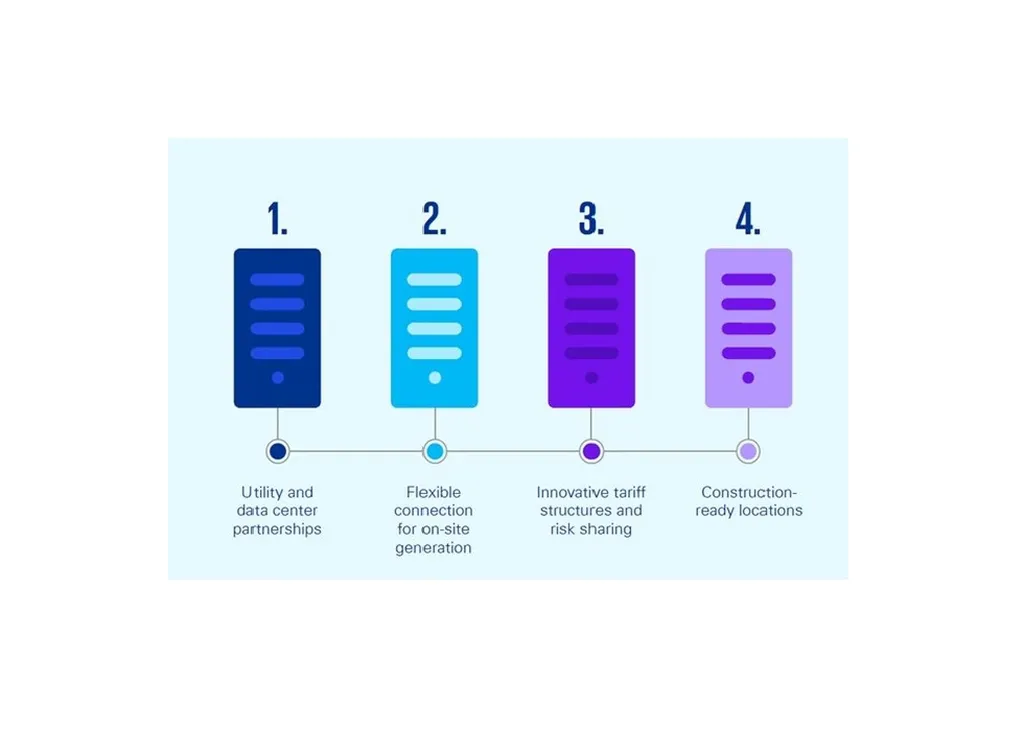The energy sector is undergoing a profound transformation, with flexibility emerging as a critical characteristic of future energy systems. As distributed energy resources, electric vehicles (EVs), and shifting demand patterns reshape the landscape, the ability to manage demand in real time has become as vital as our capacity to generate energy. This new reality demands more than upgraded infrastructure; it requires a new intelligence at the heart of our energy systems. Artificial intelligence (AI) is stepping into this role, interpreting vast amounts of disparate data, deriving insights, and proposing actionable decisions. This makes AI uniquely suited to orchestrate the complex dance of modern energy systems.
Consider an overloaded distribution cable nearing capacity, now tasked with serving a depot of e-vehicles. Traditional static rules are no longer sufficient. Operators need a dynamic view of grid conditions, other local e-depots, vehicle availability, battery levels, weather, and more. AI brings these data points together, anticipating problems and identifying the most efficient, cost-effective interventions across the system. AI is emerging as a practical enabler of flexibility, improving how we plan, forecast, and operate energy systems to unlock grid capacity, lower emissions, optimize technical and economic performance, and strengthen resilience.
Across Europe, grid operators face an avalanche of connection requests driven by the rapid growth of EV chargers, battery systems, heat pumps, and rooftop solar. Manually processing these requests is becoming nearly impossible, and rule-based approaches are increasingly unsustainable. AI steps in not just to automate but to improve outcomes by suggesting solutions based on a broader set of interlinked data. AI platforms, capable of understanding and acting on technical inputs and regulatory constraints, can pre-validate requests, run grid impact simulations, and even propose flexible alternatives where infrastructure upgrades would be too costly. This enables rapid processing of straightforward applications, freeing engineers to focus on complex cases requiring tailored responses to societal concerns like public opposition. It is not just about speed; it is about building technical efficiency and economic viability, bringing consistency to decision-making and embedding flexibility into the grid from the outset. This allows new loads to be accepted under dynamic conditions, rather than defaulting to expensive reinforcement or declining connection requests.
Flexibility only delivers value when it is well-timed, and that requires foresight. AI-powered forecasting provides it, spanning both short-term operations and long-term planning, while also supporting cost reduction, emissions avoidance, and efficient asset use. For example, over a seven-day period, AI models trained on weather conditions, user behavior, and distributed energy resource (DER) characteristics can deliver granular predictions of electricity demand and generation on an hourly or sub-hourly basis, scheduling energy storage, dispatch, or demand-side response to avoid predicted congestions. These decisions optimize for both technical feasibility and economic efficiency, while reducing reliance on carbon-intensive backup systems. Looking ahead up to five years, AI shifts focus to strategic planning. Estimating demographic trends, evolving energy policies, and technology adoption rates helps simulate how demand and distributed generation will likely evolve. These long-term forecasts allow operators to identify where future load growth or DER clusters might strain the system, and where flexibility schemes such as dynamic tariffs or local storage could help avoid costly infrastructure upgrades. This ability to bridge the operational now with the strategic next gives energy providers a powerful edge by aligning immediate actions with future needs and ensuring flexibility becomes a long-term asset.
In many parts of the grid, particularly low-voltage networks, operators still face blind spots. Measurements are sparse or unreliable, making it difficult to act with confidence. AI can help fill in those gaps. Using state estimation techniques and pattern recognition, machine learning can infer the likelihood of congestion or faults, even with limited data. The result is earlier warnings, faster fault detection, and the ability to mobilize flexible assets like batteries or demand response. These pre-emptive actions not only boost resilience but minimize the economic cost of unplanned outages and reduce emissions from emergency measures. By turning fragmented data into actionable insight, AI gives control room operators the confidence to act swiftly and surgically.
Commercial buildings, industrial sites, and campuses are increasingly participating in the energy system, equipped with solar panels, batteries, heat pumps, and other decentralized assets. Unlocking their full potential requires intelligent orchestration. AI makes this possible by combining model predictive control with machine learning to forecast demand, renewable generation, and market conditions. These systems go beyond offering recommendations and take direct control of energy assets in real time, responding to shifting weather, occupancy levels, and pricing signals. Every decision is grounded in technical constraints such as minimum uptime or shutdown durations, ensuring compliance and operational continuity. This intelligent orchestration helps facilities lower peak demand, increase the use of self-generated renewable energy, and participate in demand-side flexibility programs. Across sectors like manufacturing, healthcare, and logistics, AI-enabled systems are already reducing energy costs, cutting emissions, and strengthening grid stability.
Electrified

